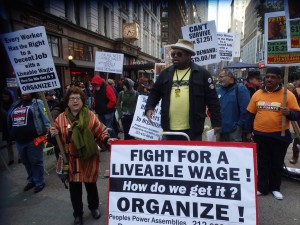Get That Monkey Off Your Back, Give It All Your Money
If you research “how to get out of credit card debt” – You’ll find a few articles titled something about the 6 ways to get out of debt.
We know the truth…the only way to get out of debt is to pay it off. You cannot bake it in the oven and turn it into cookies. You cannot eat some many cookies you forget about the debt. It is not out-of-sight-out-of-existence…You cannot meet a genie and get three wishes. You can meet someone and marry into wealthy, maybe. But that blessed person is still going to do the one thing: pay it off.
Here Are Those 6 tips That Might Give You The Framework To Suck It In, Buck It Up and Pay Those Credit Cards, Mortgage and Auto Loan..Any Debt…Off.
- Pay the highest interest rate down first.

- Pay the minimum payment on all cards but the highest interest rate…pay as much as you humanly can let out of your clutches…
- When that card is gone, throw all extra money at the next highest interest rate and minimize interest accumulation to the max.
- The bonus is: you’ll save the most money long-term
- Or do the exact opposite with the “snowball” method.
- Pay the lowest balance first, because you can knock it out quicker.
- That boost in confidence will give you the pat-pat you need to keep going.
- This isn’t maximizing your pocket ball, but it might maximize your will power with some emotional button pushing: Seeing progress faster, keeps you going longer.
- Pick 1 OR 2 – It doesn’t matter much because you just have to do the one thing: pay it off.
- Transfer balances and chase 0% interest
- Be really responsible with this option
- Automate those payments so you don’t miss them. One missed due date and you could be slapped with the interest rate and all would be for naught. Do not make new purchases on the cards. I’m going to repeat that in tip 4.
- Be really responsible with this option
- Budget
- Probably you have some debt because you didn’t have a budget. Sometimes you have a budget and things come up and and that little bit you dug into debt is a sink hole…
- Do not keep paying for things on any of the cards – Put them away, hidden.
- Even if you really need that thing…
- You don’t actually need it. Go without it.
- Even if you really need that thing…
- Budgeting isn’t easy. And you you research that question you’ll get 100+ tips. Read This article about it…
- Start an emergency fund “Give it all your money” – not all your money, because you’ll set aside some in this fund to prevent future credit card spending.
-
- The ease on your mind: priceless.
- Pretend you have another credit card that you need to pay, and pay it to yourself
- It’s helpful to build your savings before focusing on debt.
-
- Switch to cash
- An interesting study showed something that we find intuitively to be true. If we want a good we are willing to pay more for it when we buy with credit and we are willing to be pay less for it when we pay with cash.Paying for things in cash will allow you to spend smarter because you can see the money and therefore see the value of the dollar, better.
 Here Is A Bonus Tip With Lucky #7: Sink Your Entire Tax Return Into Your Debt Every Year And Make Minimum Payments The Rest Of The Months.
Here Is A Bonus Tip With Lucky #7: Sink Your Entire Tax Return Into Your Debt Every Year And Make Minimum Payments The Rest Of The Months.
To sign up with Income Tax Planning Network Click Here…
Share
Follow Us!


